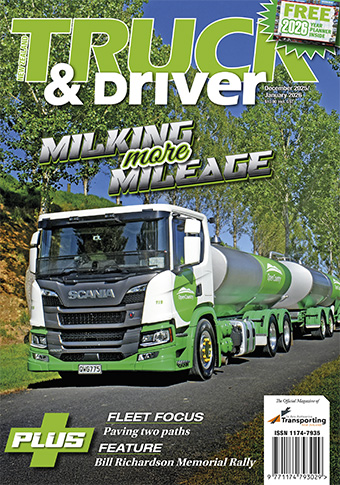
Average speed safety cameras to be rolled out across the country
Posted: 07-Nov-2025 |
New Zealand Transport Agency Waka Kotahi (NZTA) has confirmed the locations for 17 sets of average speed safety cameras.
Subject to final testing, the first set is expected to start enforcing speeds from 1 December at Matakana Road in Warkworth.
Average speed cameras work by calculating a vehicle’s average speed along a length of road between two cameras(external link). They measure the time the vehicle takes to travel between the cameras and calculate the average speed. Drivers are only ticketed if their average travel speed between two cameras is over the limit.
“Average speed safety cameras are widely used overseas, and they are proven to reduce deaths and serious injuries,” says Tara Macmillan, NZTA Head of Regulatory Strategic Programmes.
“We’ve previously announced 11 locations for average speed safety cameras, all in the upper half of the North Island. We’ve now identified a further six locations for average speed safety cameras across the rest of the country.”
The new locations are:
Southland - SH6 Kingston to SH97 Five Rivers
Canterbury - SH8 Lake Tekapo to Twizel
Otago - SH1 Allanton to Waihola
Wellington - SH2 Te Mārua to Brown Owl
Hawke’s Bay – SH2 Te Hauke to Pakipaki
Manawatū-Whanganui – SH1 Sanson to Foxton
Construction on these six new camera sites is expected to start between later this month (Otago and Southland) and mid-2026. A full list of all 17 average speed safety camera locations is included in the table further below.
Ms Macmillan says the locations for average speed safety cameras have been determined by analysing crash patterns, traffic volumes and the percentage of drivers exceeding the posted speed limits.
“All of this evidence tells us that there is a serious risk of people being killed or seriously injured in crashes on these stretches of road.
“The risk of crashes is significantly reduced if more people drive to the speed limit. By installing average speed safety cameras, we are reducing that risk and making these roads safer for everyone who uses them,” Ms Macmillan says.
“Safety cameras reduce speeding, making crashes less likely to occur, and ensure that if crashes do happen, the people involved are far more likely to walk away unharmed.
“Speeding drivers can cause serious and irreparable harm on the roads, including deaths and serious injuries. Evidence shows that we can reduce the chance of people being killed or seriously injured in crashes if drivers travel within speed limits, and that is why we have safety cameras.
“Not only are speeding drivers putting themselves and others at risk, they also make our roads less efficient and hinder productivity. Crashes can close a road for hours at a time. Fewer crashes mean fewer road closures, and more consistent and reliable travel times for everyone.”
NZTA will install ‘average speed camera area’ signs before each camera area. On longer stretches of road (corridors), drivers will see extra ‘average speed camera area’ signs along the way. These signs are a reminder to drivers to check their speed and slow down if needed.
The rollout of average speed safety cameras supports the focus on enforcement of high-risk behaviour, including speed, as part of the strategic safety priority in the Government Policy Statement on Land Transport 2024 (GPS).
NZTA does not receive any incentives or funds from tickets issued. Safety camera infringement fees go into the Government Consolidated Fund.



 + EQUIPMENT GUIDE - FREE
+ EQUIPMENT GUIDE - FREE
